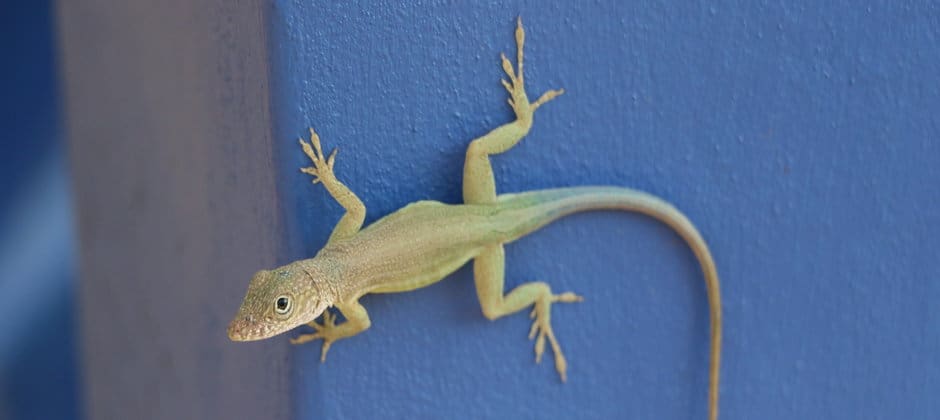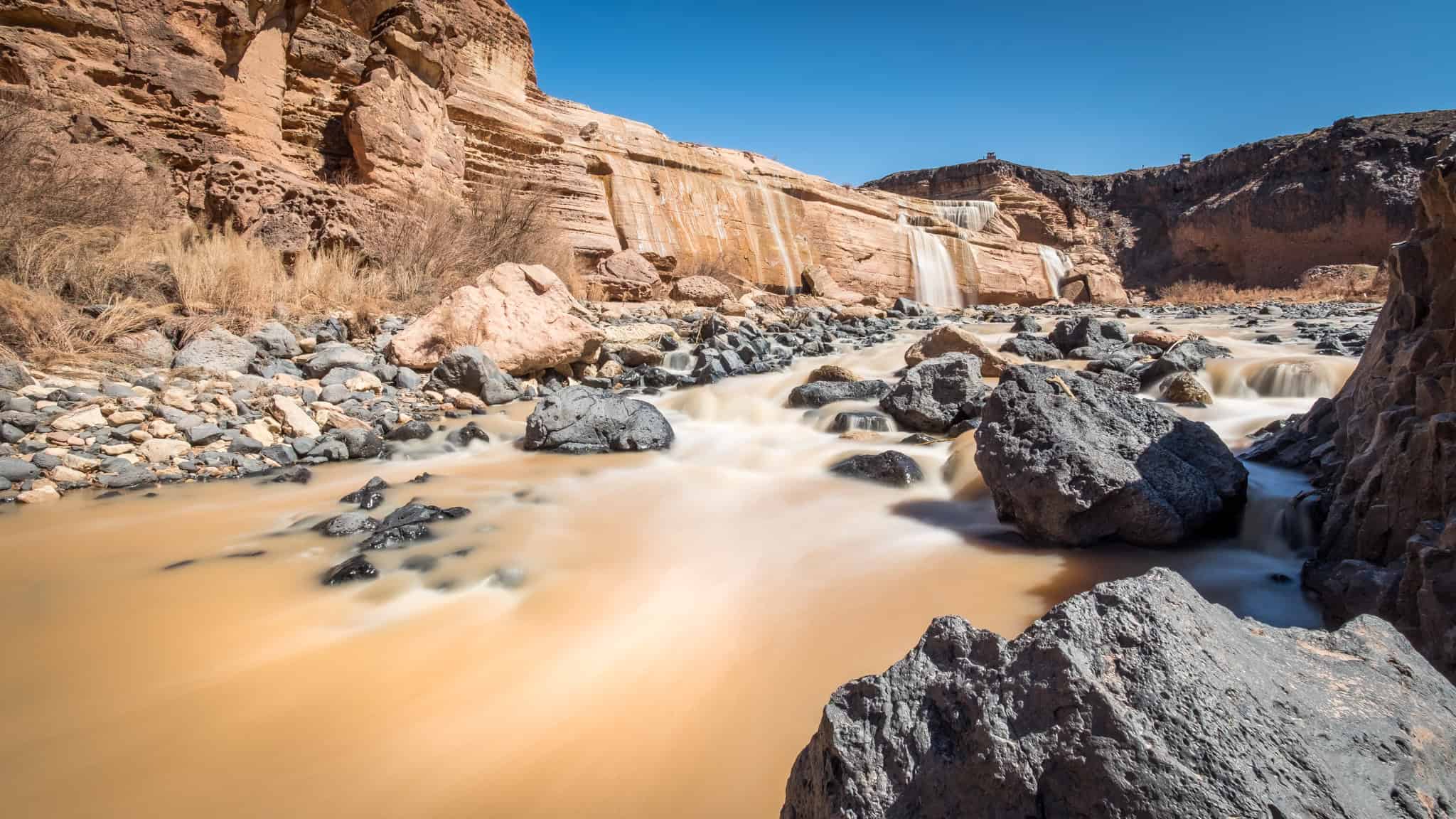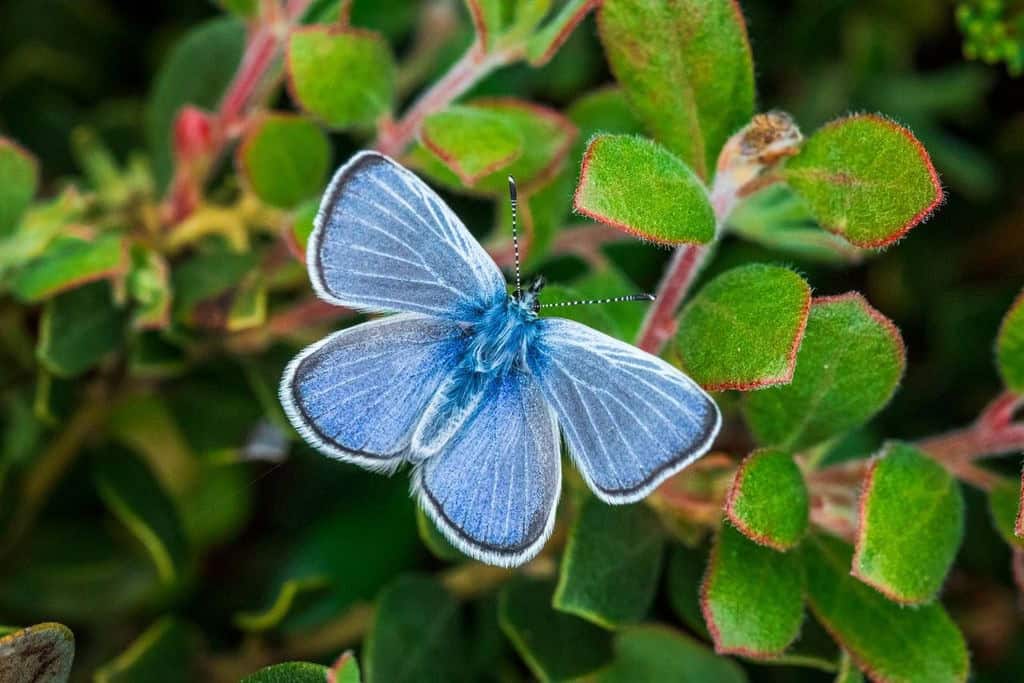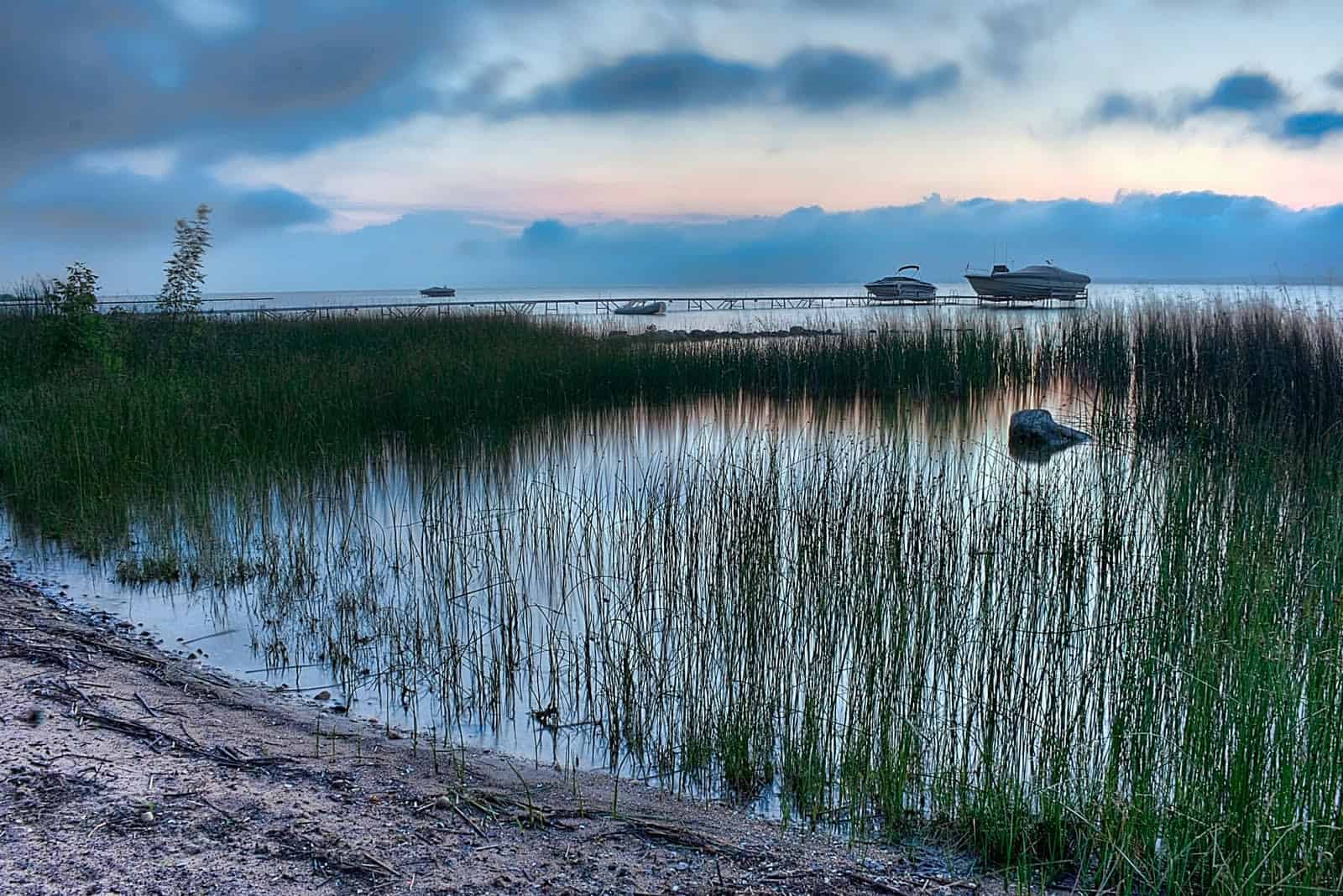Share this article
Hurricanes can shape lizard evolution
The winds of change blow strongly on the toepads of lizards most frequently caught in the paths of hurricanes.
A new study on nearly 200 anole species across the Caribbean and South America shows that hurricanes play a large role in the evolution of lizard grip.
“The population that had been hit more by hurricanes tended to have larger toepads than those that had been hit less frequently,” said Colin Donihue, a postdoctoral research fellow in biology at Washington University and the lead author of the study published recently in Proceedings of the National Academy of Science.
Donihue led an earlier study published in 2018 that showed that Turks and Caicos anoles (Anolis scriptus) that survived hurricanes Maria and Irma in September 2017 had longer forelegs and larger toepads on average than lizards measured just six weeks earlier, before the two storms struck the Caribbean islands. The study also demonstrated that green anoles (Anolis scriptus) with strong forearms and larger toepads were better able to hang on to branches in a laboratory test using a wind tunnel and fan.
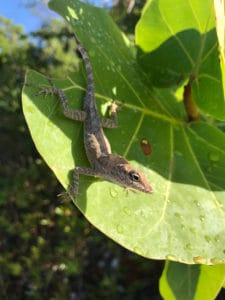
Turks and Caicos anoles that survived hurricanes Maria and Irma in 2017 had larger forelimbs and larger toepads on average than anoles measured before the hurricanes truck, an earlier study found. ©Colin Donihue
“That study was novel and unique for a lot of reasons. It was the first time that someone had demonstrated natural selection and survival due to a hurricane,” Donihue said.
But the researchers wanted to see whether this trend was measurable over a longer period and with more species of anoles — a genus found widely across the Caribbean and mainland in the Americas.
The team returned to the island a year later and measured more Turks and Caicos anoles. They found that the offspring of the survivors still demonstrated a larger average toepad length than lizards measured before the hurricanes.
“This shows that the hurricane not only affects natural selection, but likely also has an evolutionary effect that cascades through the generations,” Donihue said. The discovery indicates that the results aren’t just a highly localized random phenomenon that is erased as new generations hatch.
The researchers thought that if these storms affected the evolution of Turks and Caicos anoles, other areas that had experienced hurricanes in the past should have had similar effects on lizard populations.
“It shouldn’t matter what species of anoles they are,” Donihue said.
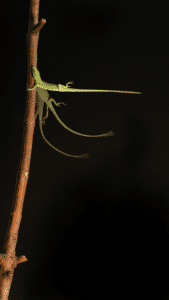
A composite photo of a green anole (Anolis carolensis) experiencing simulated hurricane-force winds. ©Colin Donihue, Digital Composite: Ben Kazez.
Since they didn’t have before and after measurements of any other individual anole species, the researchers had to take another approach to test this theory.
They first looked at brown anoles (Anolis sagrei) in the Bahamas. Data collected by the National Oceanic and Atmospheric Administration showed all the hurricanes that had hit the area in the last 70 years, including GPS measurements, wind speeds measurements in specific areas and other information.
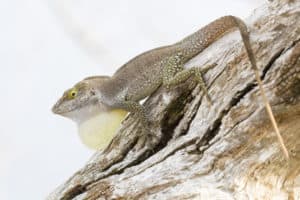
The Redonda anole, (Anolis nubilus) from the island of the same name in Antigua and Barbuda, was one of 188 species in the study. ©Colin Donihue
The team measured the toepads of brown anoles in 12 different islands in the Bahamas and compared the results with data on past storms in the area. They found that brown anoles on islands hit more often by tropical storms had larger toepads than those on islands that had experienced fewer or less intense storms.
Expanding their study to include 188 species of anoles from across the neotropics — from the United States to Brazil — they found that across the region, species that had been struck more often by strong hurricanes had larger toepads than others.
Other evolutionary pressures may also play a role. On the one hand, large toepads may help lizards clutch the leaves they sleep on and resist predators trying to pull them off, Donihue said. On the other, they could slow lizards down. But while 70 years is a short span to demonstrate evolutionary change, he said, the pattern he and his colleagues discovered indicate hurricanes play a major role.
Now, his team hopes to look beyond lizards to see what other species may show similar effects. It’s especially important to understand, Donihue said, since climate change is expected to usher in more extreme weather.
Header Image: A Graham’s anole (Anolis grahami) in Jamaica, one of 188 species included in the study. ©Joshua Rapp Learn



